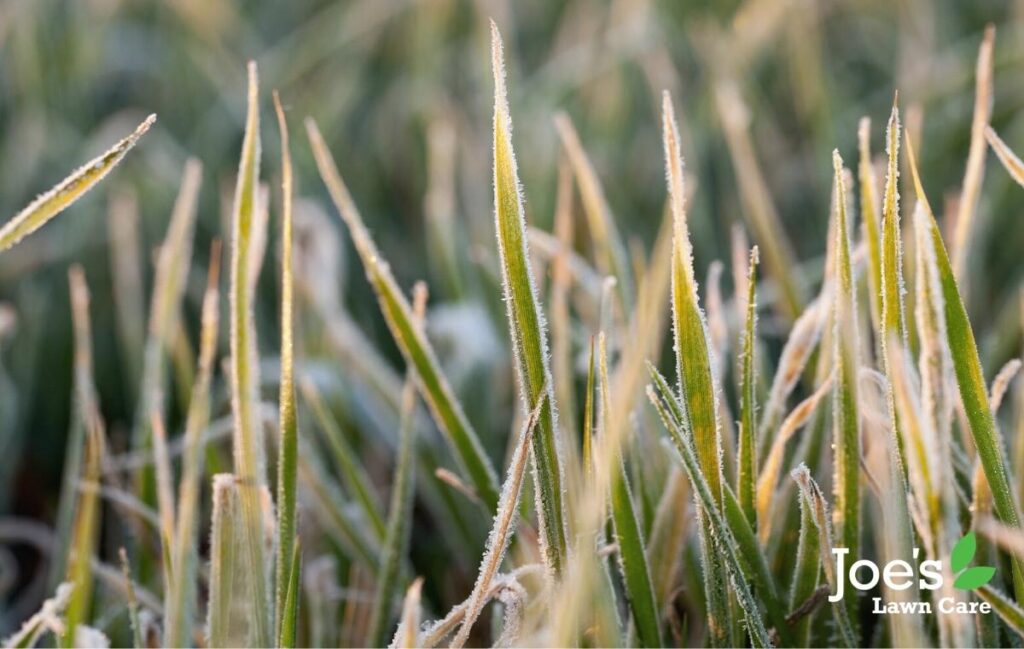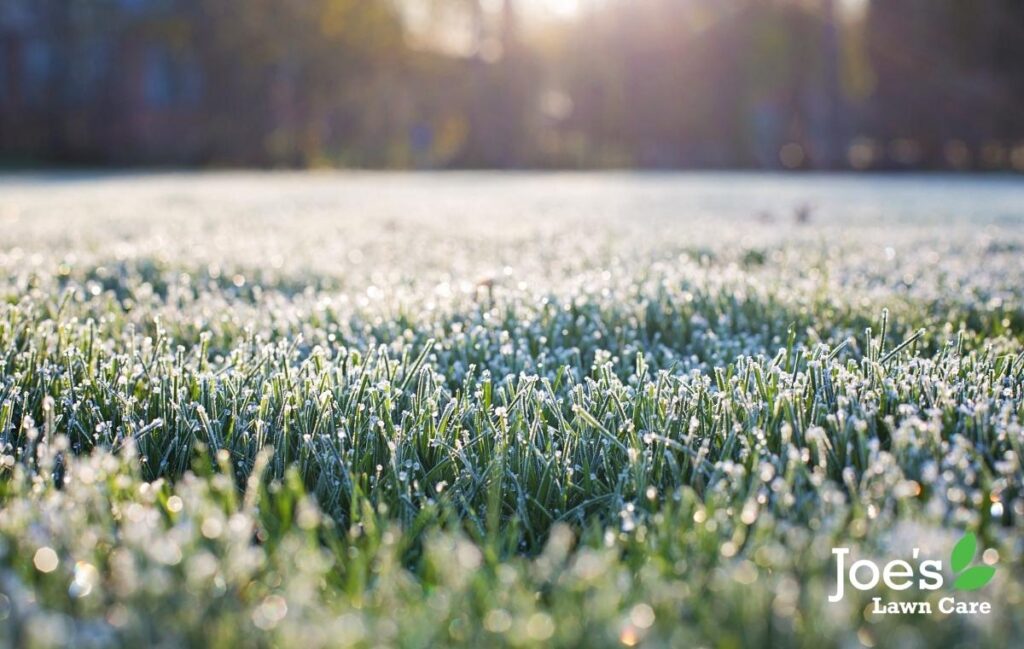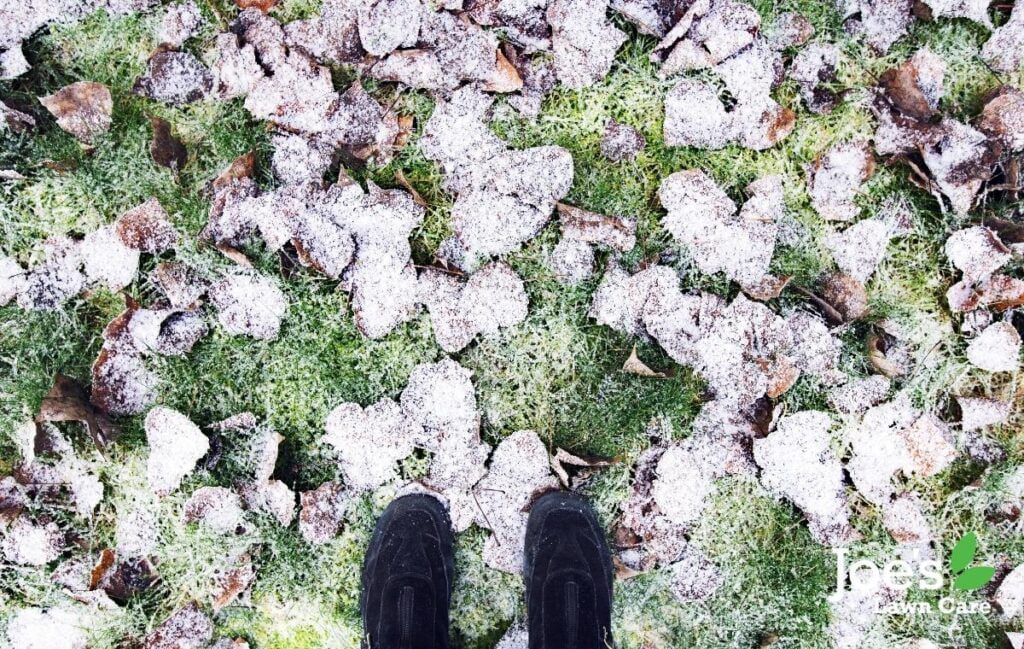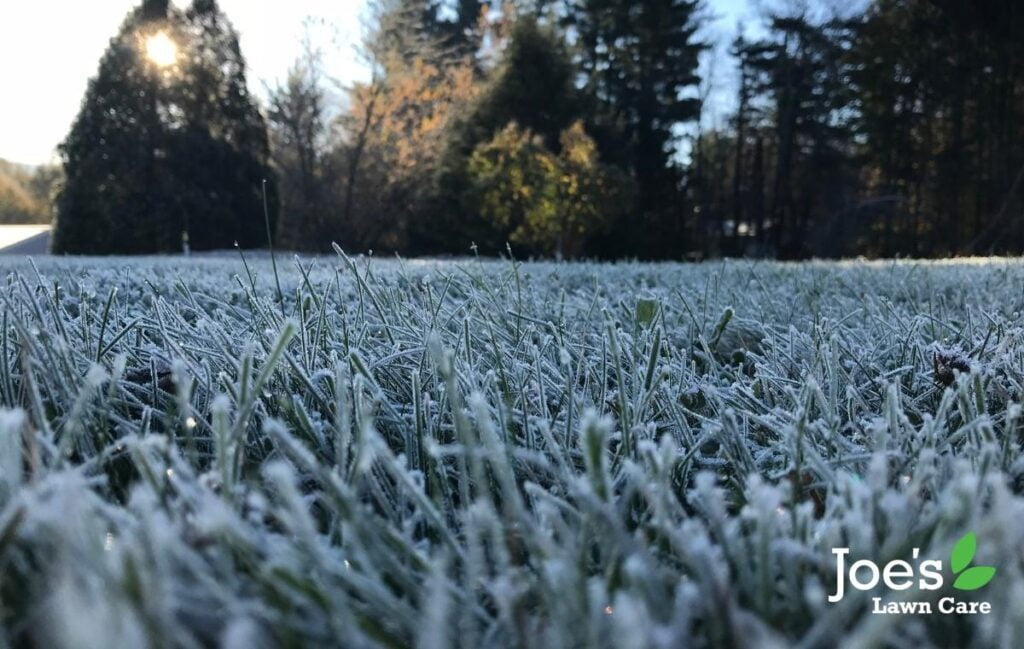This Is Why You Should Keep Off A Frosty Lawn
Ah, frost: It looks pretty, glistening away in the morning sunlight as you slurp on the coffee you forgot you made, but from a lawn care perspective, it’s actually kind of a pain to deal with — and if you decide to take a walk across your frosty lawn lawn, chances are you’ll be causing some serious long-term damage to your grass.
That’s why we gathered our team of lawn care legends and asked for their expertise on how frost can affect your grass, as well as their top tips on how to reduce the negative impacts. Let’s go.

What Exactly Is Frost?
We’ve all stared in disbelief at the beauty of frost, and some of us have even braved the cold, got down low and tried to show off our amateur photography skills – but what exactly is frost? Well, the easiest way to describe it is water vapour (aka water in gas form) that has become solid.
How it forms, though, is when an outside surface cools past the dew point, which is the point where the air gets so cold that the water vapour in the atmosphere becomes a liquid and then this liquid freezes, getting so cold that little bits of ice form. This is what we call frost.

The Different Ways Frost Affects Your Lawn
For you to wake up to a lawn covered in frost, there needs to have been a cold, clear night when the atmospheric conditions cause things to become colder than the air around it, things like cars and windows and, yepp, grass. Now, depending on these atmospheric conditions, the first can either be light and pretty or it can be so heavy it has the power to kill your plants or cause your grass to go dormant.
How this process affects your lawn is down to the way grass plants move water through their blades for nourishment; water that can freeze inside your grass plants when Jack Frost arrives. You see, when water molecules freeze, they expand, causing the cell walls to rupture, which can really damage your grass plants.
The good news is: a light frost typically won’t freeze the ground, meaning your lawn’s root system won’t freeze either. Sure, a few grass blades might be struggling a bit thanks to the frost, but your roots will be strong enough to repair this damage and keep your grass growing strong and healthy.
The big issues occur when there has either been a heavy frost or few nights of prolonged frost, both of which can lead to visible signs of damage, especially in northern climates. But it’s not all bad news because you can simply reseed any areas of damaged grass the moment spring arrives, while any dead grass will gradually turn to that, nourishing your soil while any new seeds start to germinate.

Never Walk On Frozen Grass
When frost settles on your lawn, what you’re seeing is grass blades that are literally frozen. That’s what makes frost so dangerous and your grass so vulnerable. That’s why you absolutely need to stay off your lawn during a frost. Mowing the lawn, walking to your shed, letting the dog run across it – all of that can snap your grass blades.
The reason for this is pretty simple: because your grass blades are frozen, the expanded water molecules will burst through the cell walls if any weight is put on your grass, causing significant and long-term damage. Of course, grass being grass, your lawn will bounce back eventually, the problem is, it might not fully recover until the following spring.

Reducing The Problems of Frost
One of the easiest and most effective ways to prevent a light frost from harming your lawn is to water your grass the evening before a frost is due. By doing this, the moisture in your grass blades will have a chance to nourish and then slowly evaporate overnight, a process that will create enough friction and heat around each plant. Then, once the temperature of the night air falls below freezing, your grass will be protected by that evaporative heat process, which will prevent the water molecules expanding and rupturing the cell walls.
That said, if the temperature drops enough to create a heavy frost that freezes your lawn and you absolutely need to walk across it, let your dog out or even mow your grass in winter, the best thing you can do is wait until the sun has had a chance to thaw the frost. And if you want to help speed up this process, you can always attach your water sprinkler to your hot water tap and use warm water to melt away the frost.
Thanks for reading our blog ‘This Is Why You Should Keep Off A Frosty Lawn’. For more lawn care tips and tricks, follow us on Facebook and Instagram.





